All photos © Alan Burger
In summer 2022 I made a solo visit to Cathedral Lakes Park – my sixth visit to this lovely mountain park. Andrea and a couple of friends had been up there two weeks earlier. As usual I took the shuttle ride up to the lodge and then camped in the Quiniscoe Lake campsite.
On my first full day I did the Rim Trail going up above Quiniscoe Lake. It was a steep uphill slog but produced spectacular views in crystal clear conditions from the top of Quiniscoe Peak.

Panorama taken from Quiniscoe Peak. On the left is Quiniscoe Lake with the lodge on the far left of the lake and the campsite on the far right. Going to the right are Lake of the Woods, Pyramid Lake and Glacier Lake. Across the valley is Lakeview Mountain.
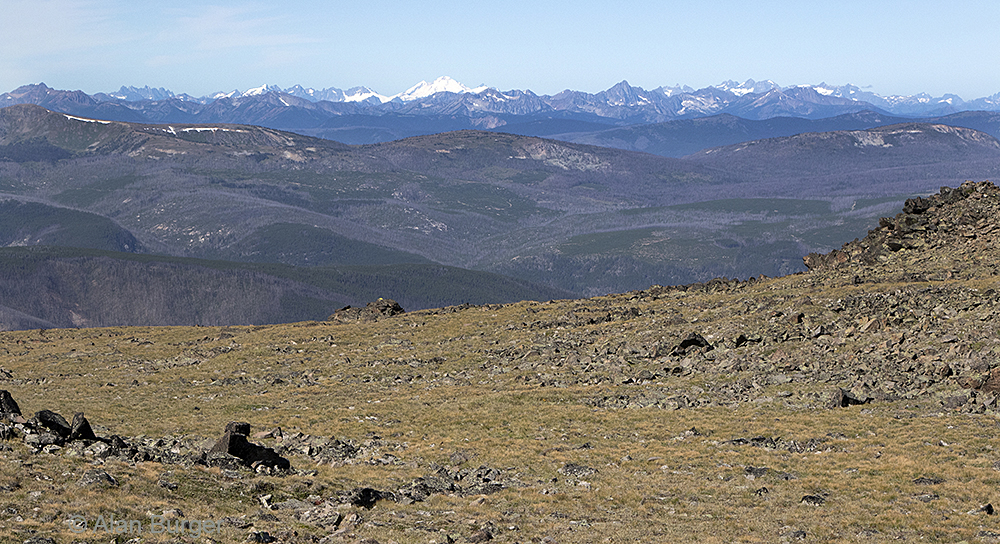
Looking west from the Rim Trail on 16 August under clear skies. Mount Baker is clearly visible on the horizon, 120 km away.
Although the vegetation is sparse on the ridge-line, there are always interesting plants and animals to see.
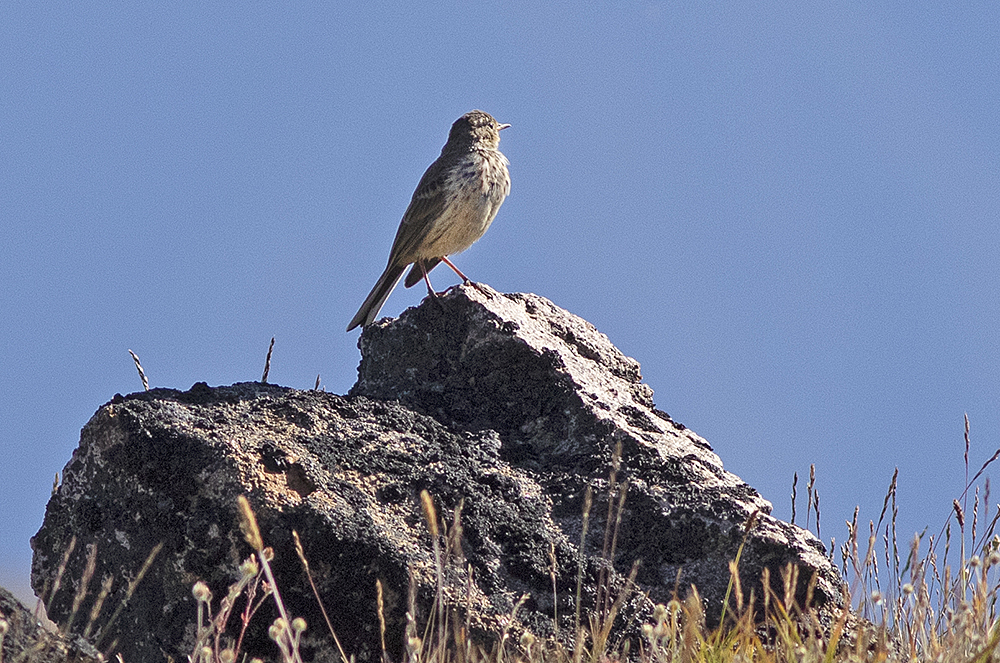
American Pipits are the most common birds I usually see long the ridge trail. They breed here.
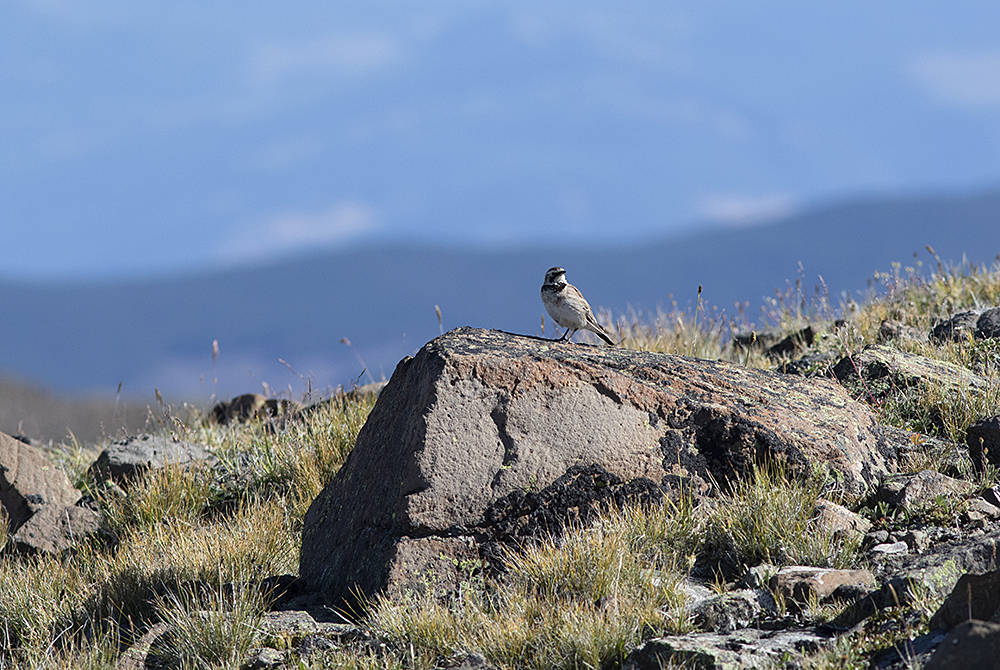
Horned Larks also breed in the high alpine areas and one of the pairs I encountered was feeding a fledgling.
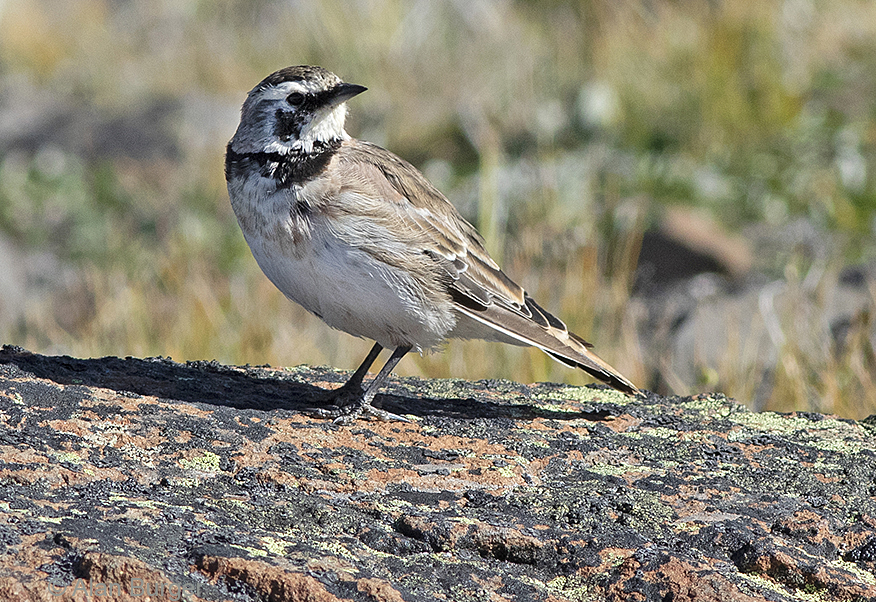
A closer look at a Horned Lark.
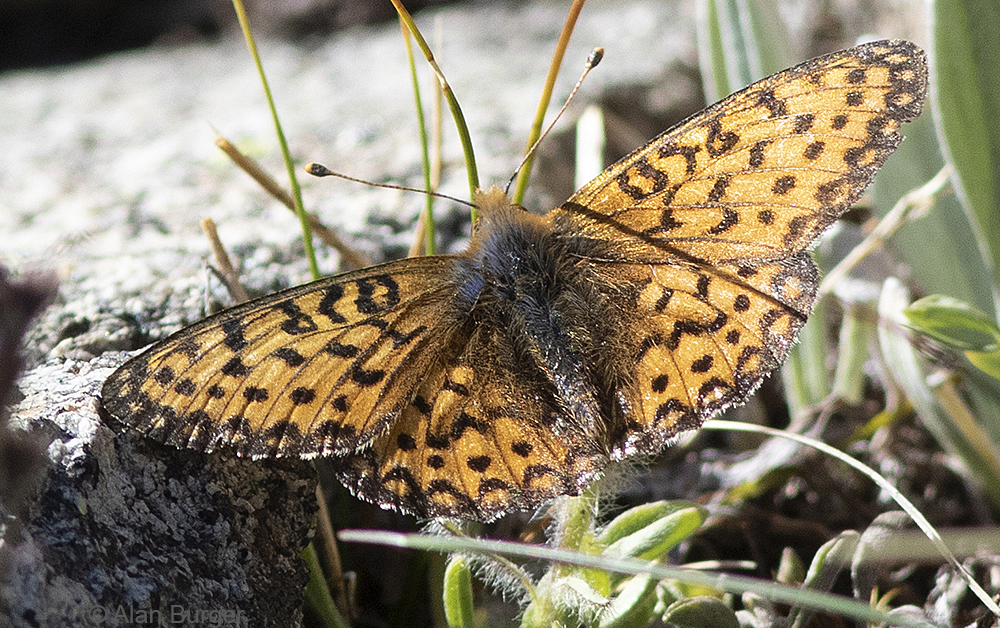
This Fritillary butterfly – probably Freija Fritillary Bolaria freija – is one of the more common butterflies in the alpine areas of Cathedral Park.
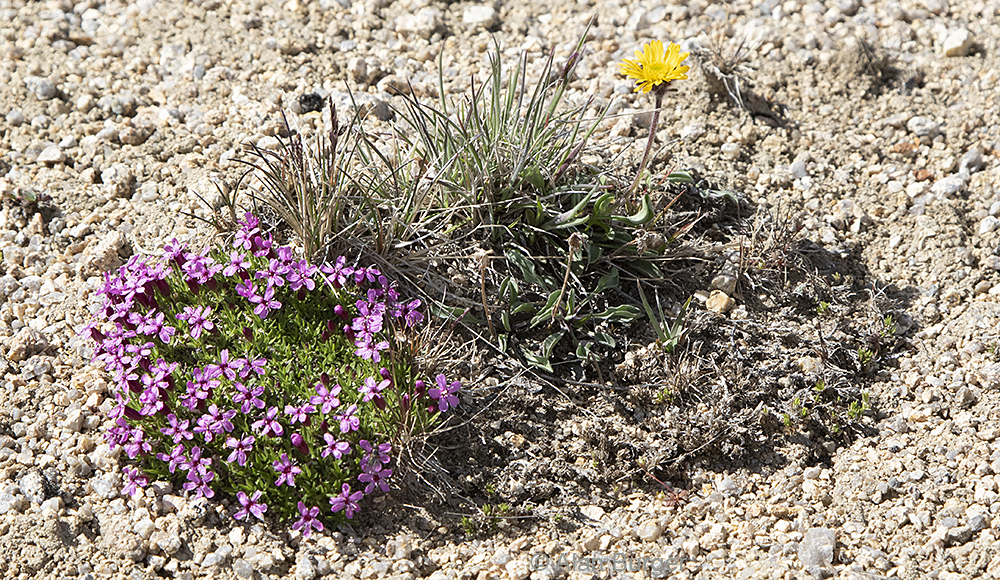
On the exposed ridges with gravelly sandstone substrates, the cushion-plant Moss Campion (Silene acaulis) with pink flowers provides a stable organic base for other plants to get established – in this case some grasses and a yellow groundsel (Asteraceae).
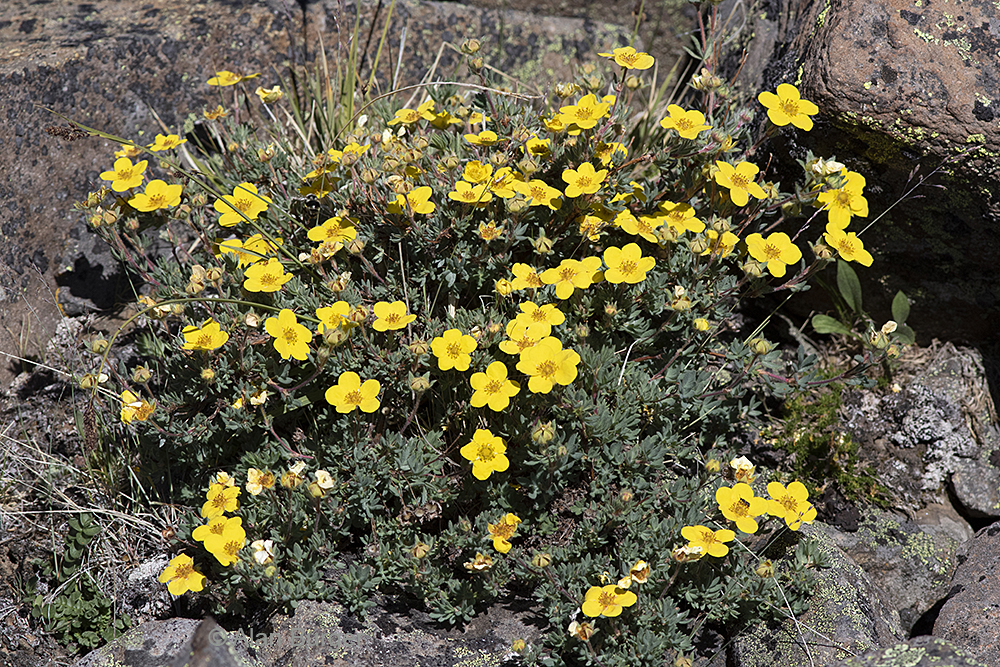
Shrubby Cinquefoil (Potentilla [Dasiphora] fruitcosa) is one of the plants to continue blooming into late summer, providing bright splashes of yellow.
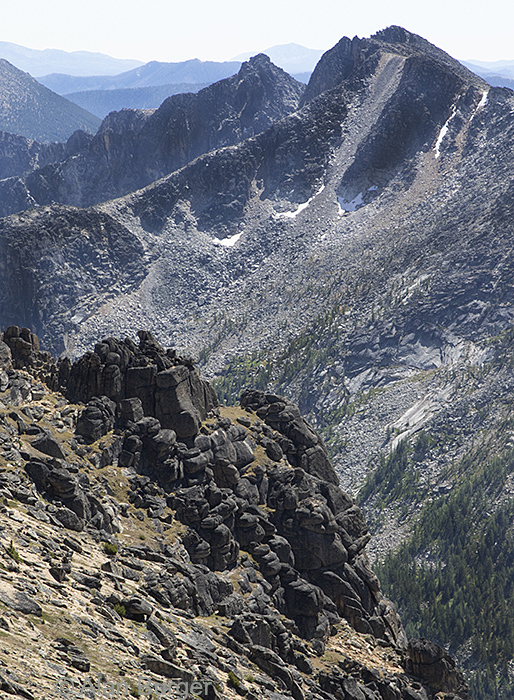
Looking across at the mountain ridge above Ladyslipper Lake with Grimface Mountain behind.
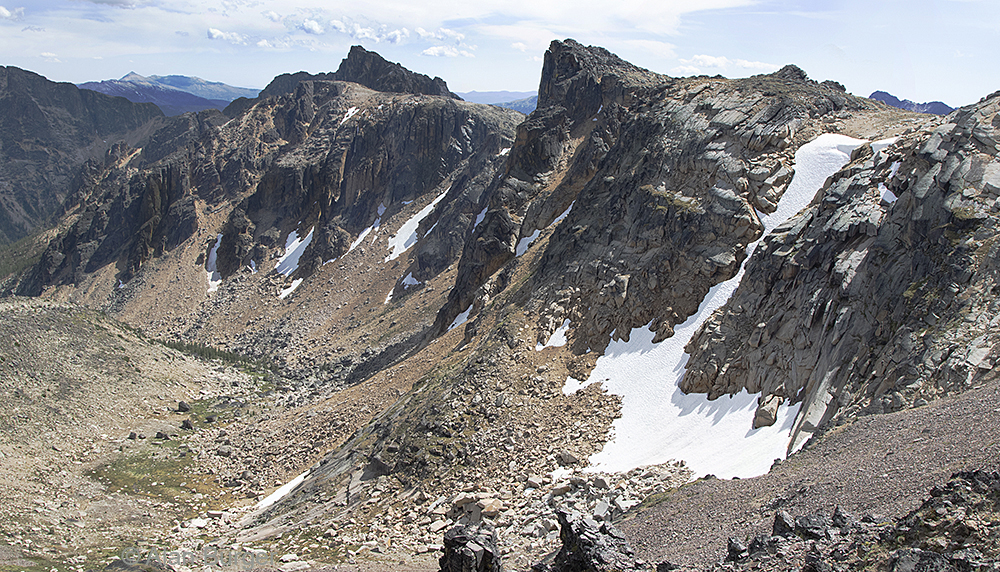
The southern mountain ridge of Cathedral Park.
I was surprised to see several raptor species circling the cliffs or passing over the ridge, including an immature Bald Eagle, Cooper’s Hawk, Northern Harrier, American Kestrel and, most exciting of all , a Prairie Falcon – one of the rarest raptors breeding in B.C.
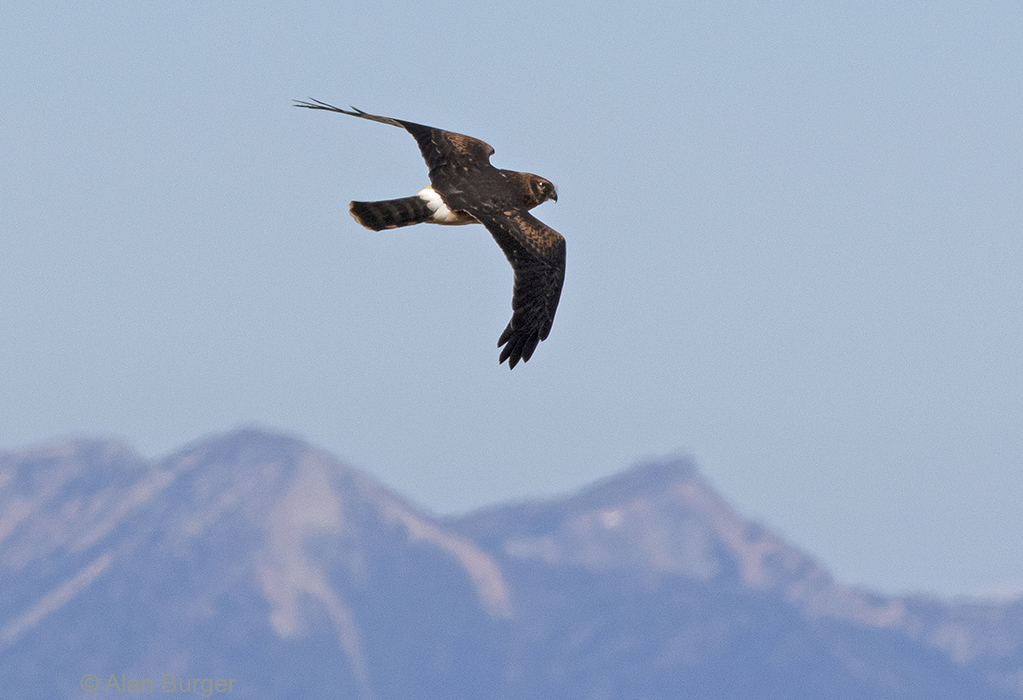
An immature Northern Harrier soaring over the mountain ridges.
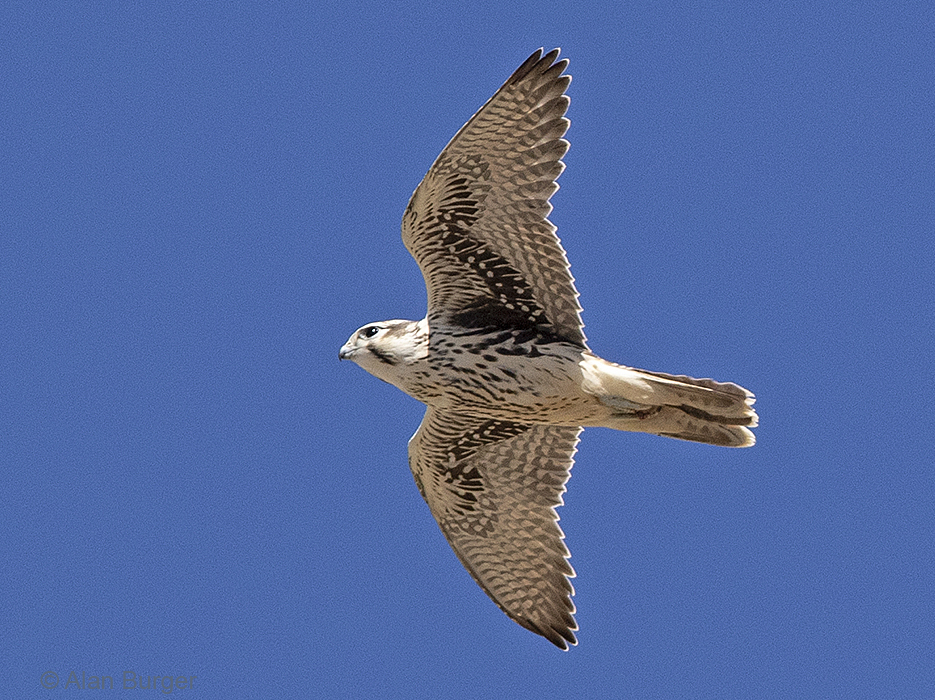
On 16 August I had three separate sightings of a Prairie Falcon – perhaps the same bird. On the last occasion it was close enough for a photo.
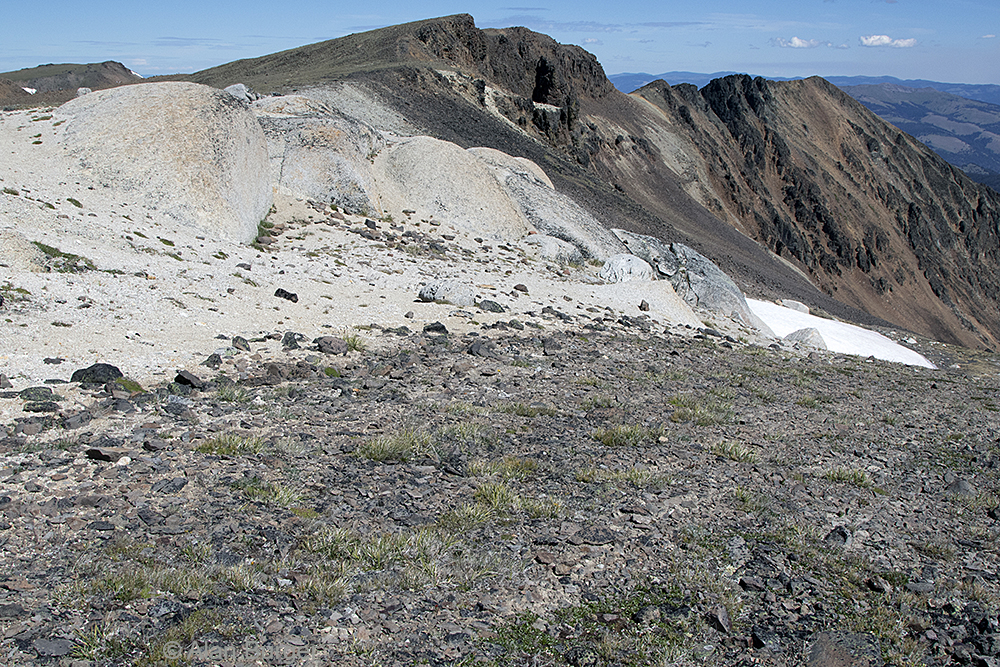
One of the interesting geological features on the Rim Trail is the dramatic transition from black basalt to pale tan sandstone. Here the sandstone is an intrusion between basalt areas.
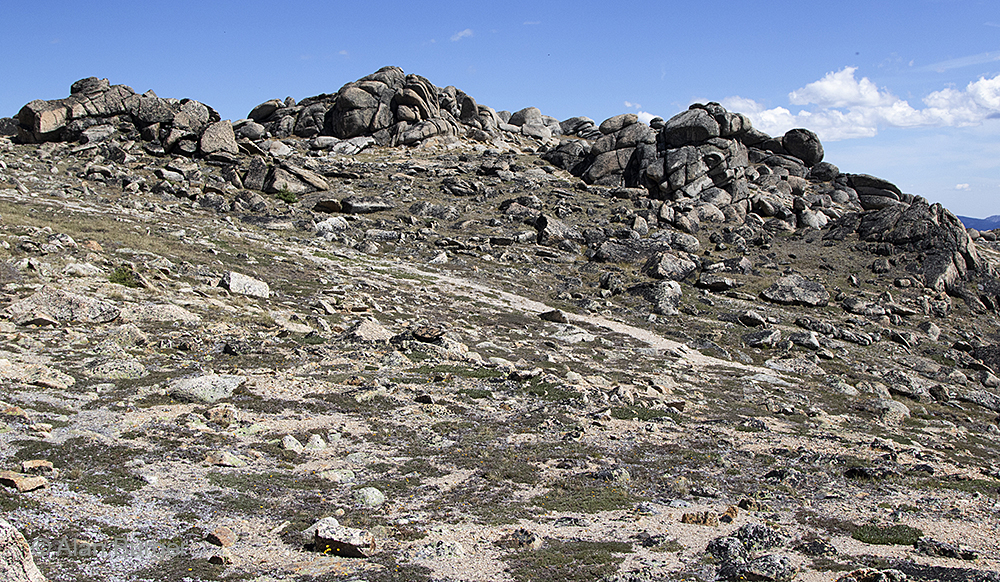
The Stone City area on the Rim Trail has wonderfully weather-sculptured outcrops of sandstone. Endlessly diverse and scenic.
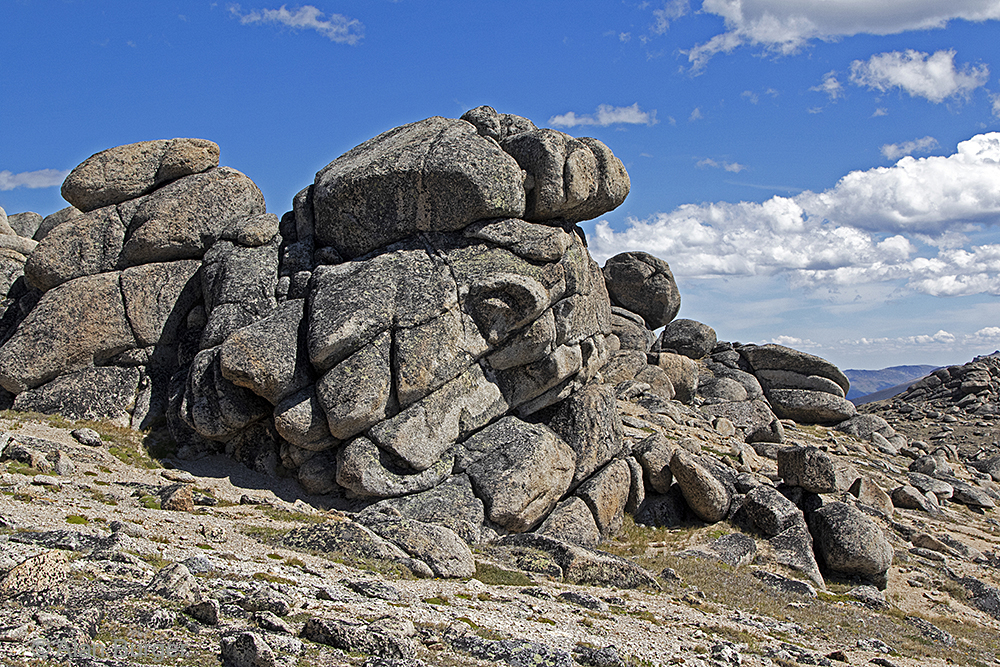
One of the lovely sandstone outcrops in the Stone City area.
The Stone City area is also a great place to find one of the more elusive birds in Cathedral Park – White-tailed Ptarmigan. These alpine grouse are masters of camouflage, with their speckled summer plumage perfectly mimicking the rock and gravel substrates and their white winter plumage making them almost invisible in snow.
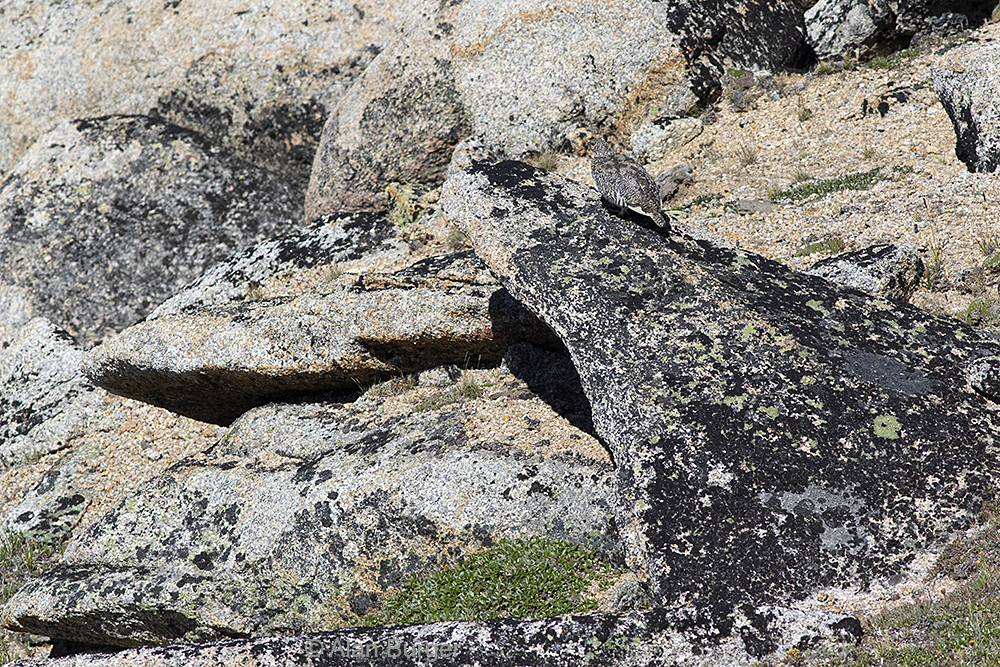
Spot the ptarmigan? This female White-tailed Ptarmigan was on high alert as I was watching because there was a Prairie Falcon circling nearby and she was well aware of its presence. She had two half-grown chicks nearby.
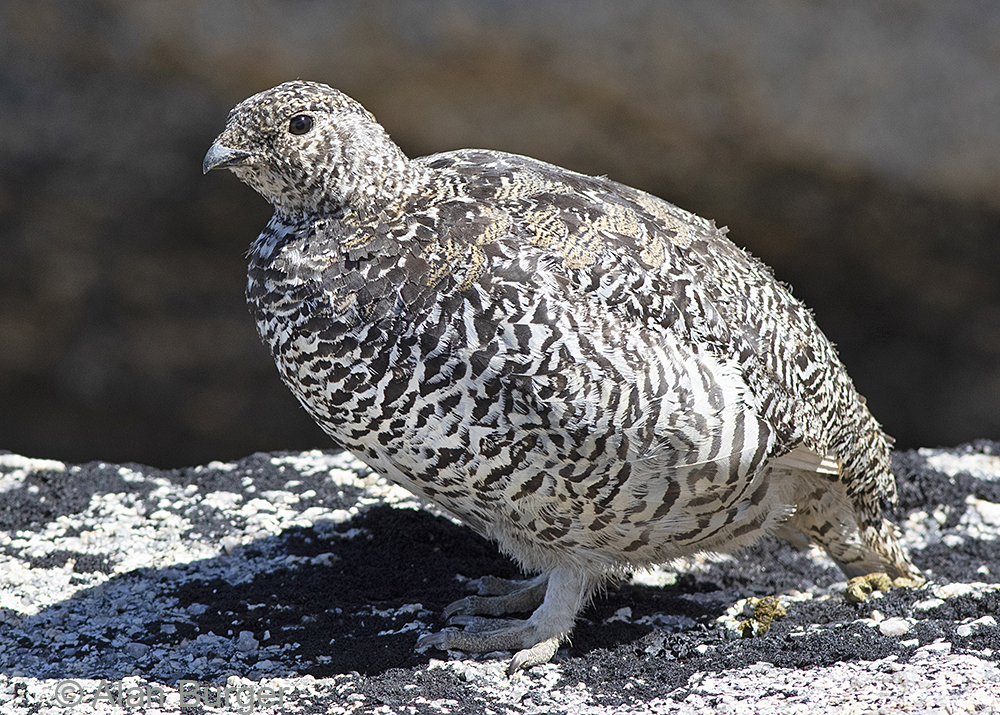
A closer view of the female White-tailed Ptarmigan. Note the feathered legs – one of the features that allow this hardy bird to live in high alpine areas year-round.
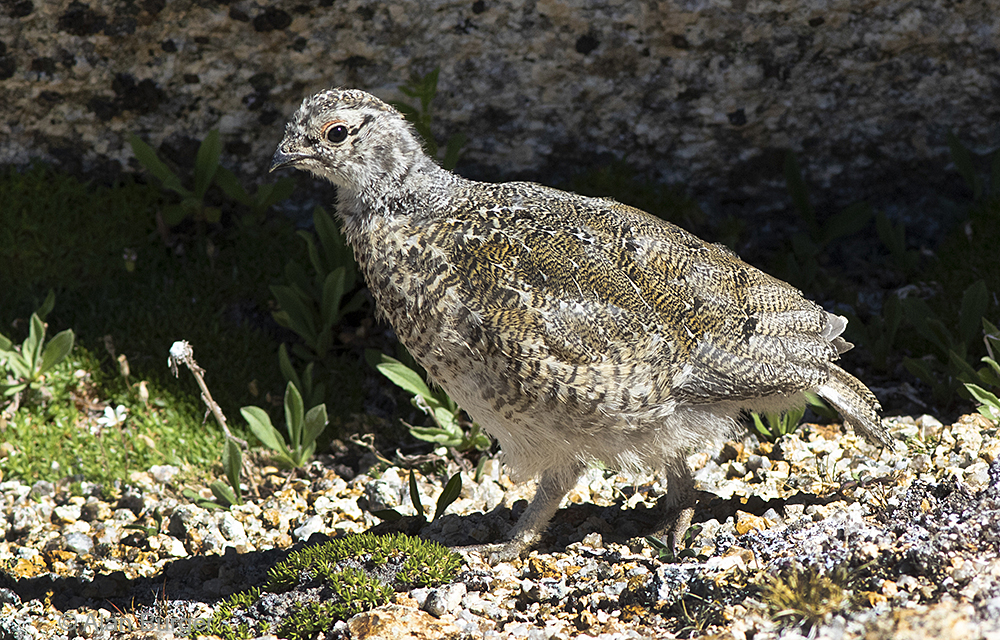
One of the two White-tailed Ptarmigan chicks I encountered on the Rim Trail.
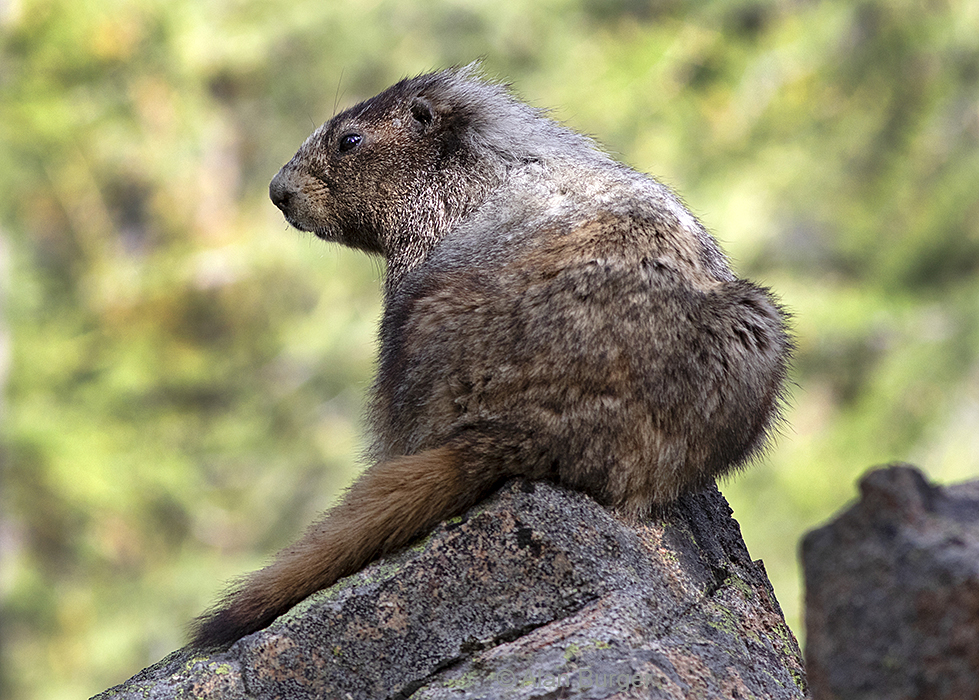
Hoary Marmots spend up to eight months of the year hibernating underground. To do this they have to end the summer with a hefty load of fat. On mid-August 2022 I saw very few marmots and I suspect some of them might already have started hibernating.
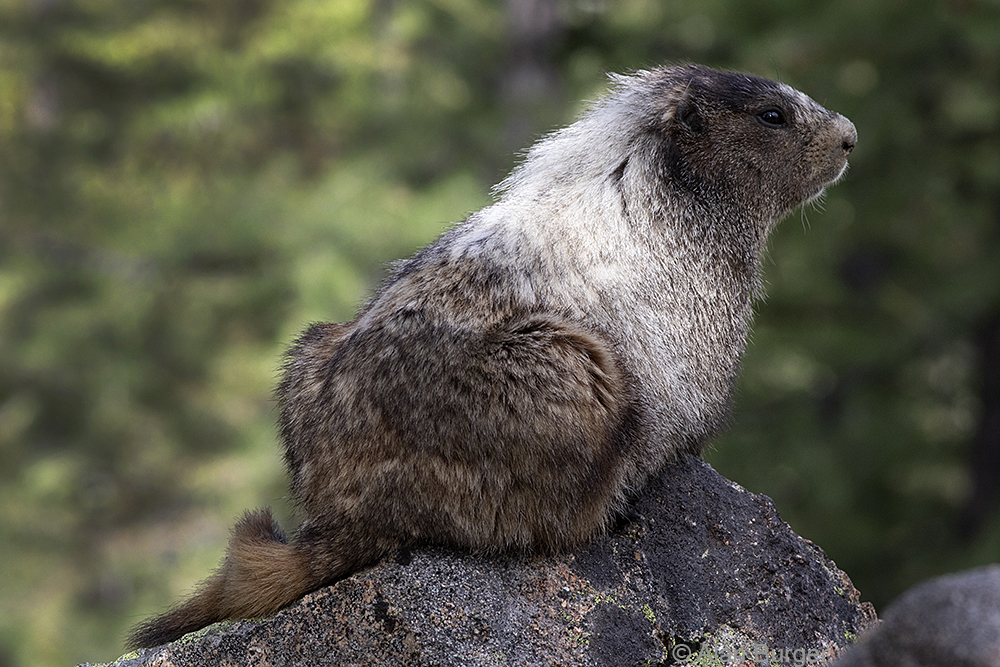
Hoary Marmots spend a lot of time in summer feeding on vegetation and also a lot of time basking on rocks. From a high perch they can more easily spot the approach of a predator. In Cathedral Park this would include Lynx, Coyotes, Golden Eagles and perhaps occasionally Cougar and Wolves.
Early every morning at Quiniscoe Lake campground there is a parade of Mountain Goats passing by – usually females with their offspring of various ages.
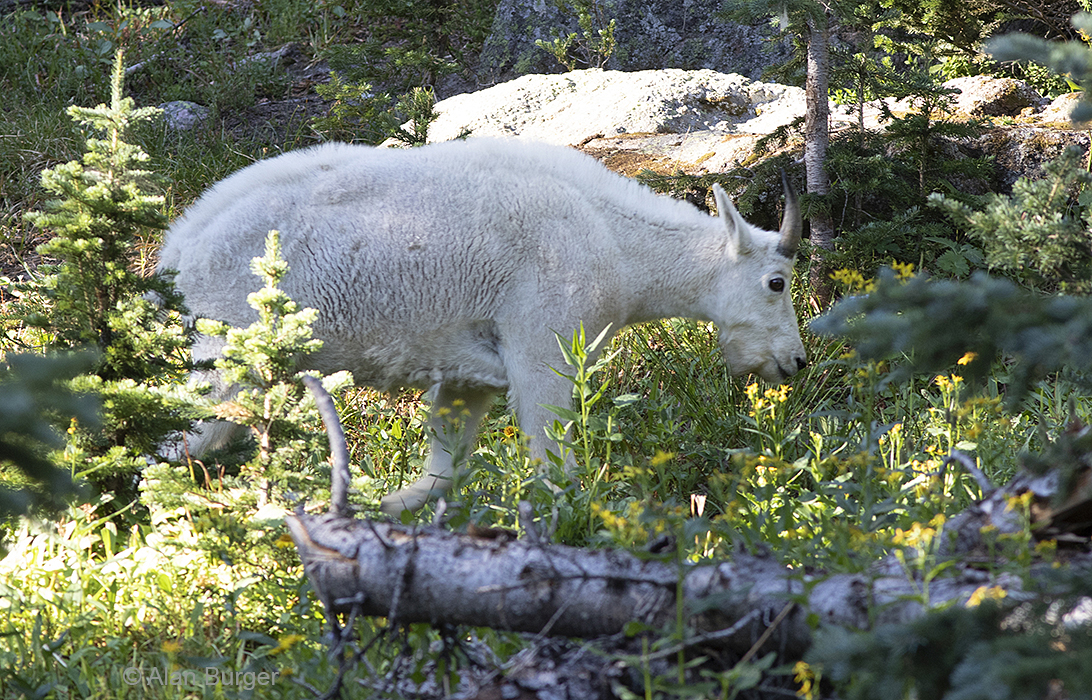
A young Mountain Goat passing by the Quiniscoe Lake campground.
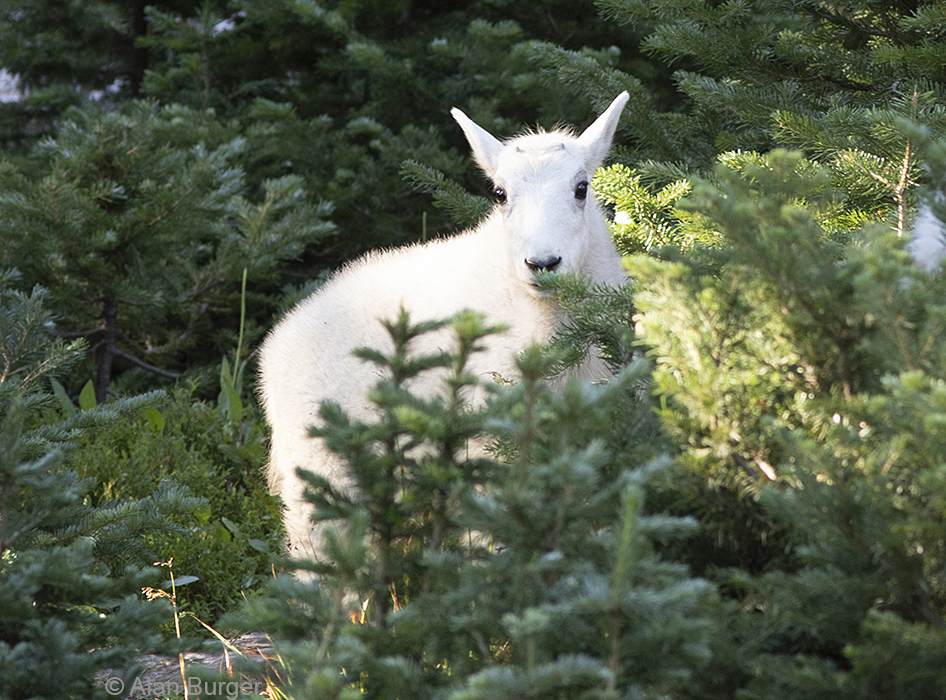
This young kid – just a few months old – was very curious to see humans, but kept close to its mum as the group passed by.
On my second full day I hiked to the Red Mountain Meadows, an area where few visitors go just outside the core area of the park. I had never been there and had an enjoyable day exploring a new trail before returning in the afternoon along the familiar Diamond Trail.
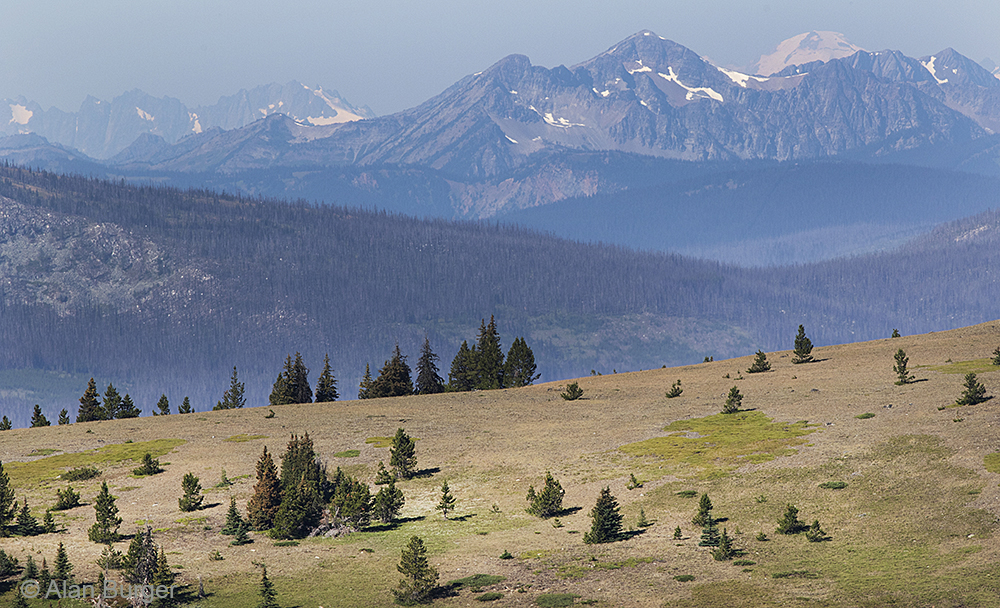
Approaching the Red Mountain Meadow from the north side of Red Mountain, with other mountains to the west and Mount Baker just peaking above on the far right.

Panorama view from Red Mountain Meadow looking east with, left to right: Scout Mountain, Red Mountain and Quiniscoe Peak.
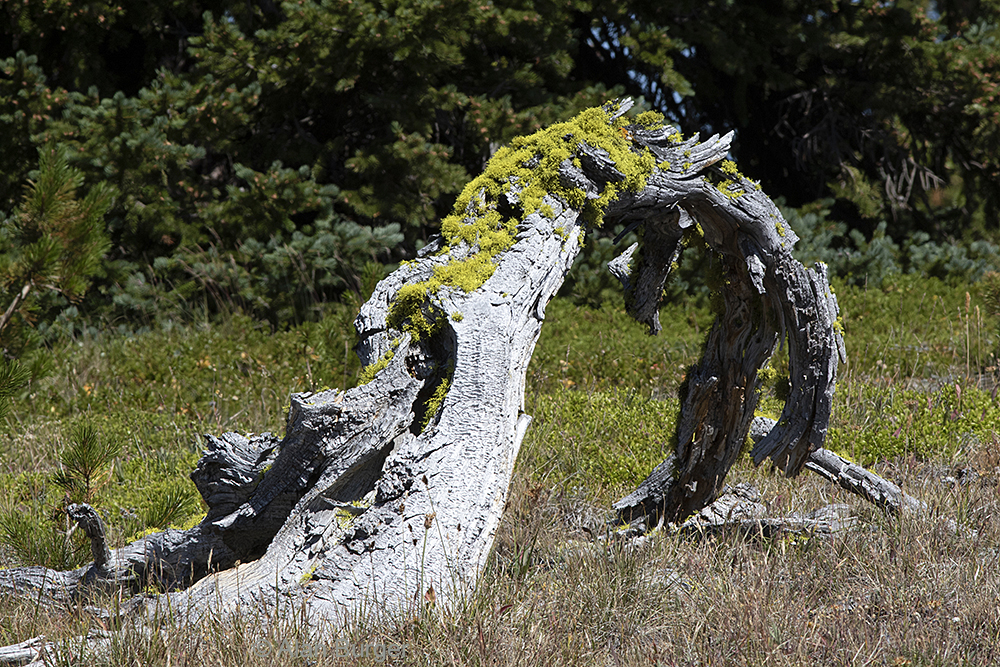
A weathered old tree trunk garnished with yellow-green lichen on Red Mountain Meadow
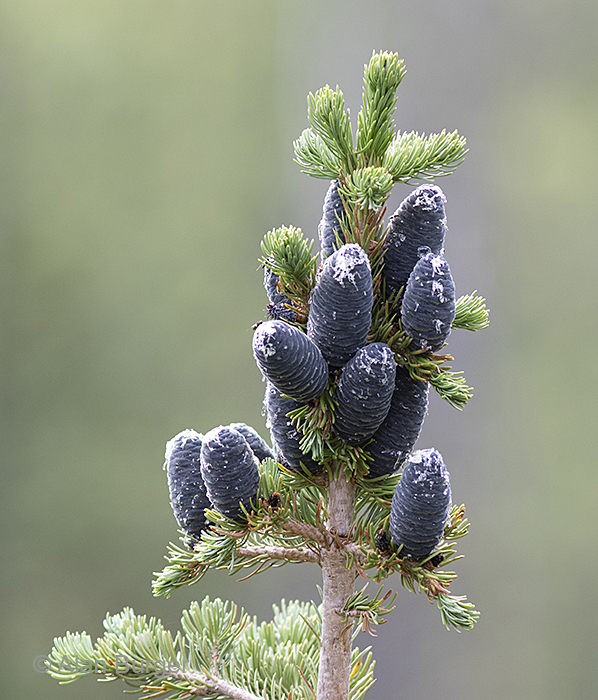
Fresh cones of Subalpine Fir (Abies lasiocarpa).
The Diamond Trail is always a delight with wildflowers, butterflies and wildlife.
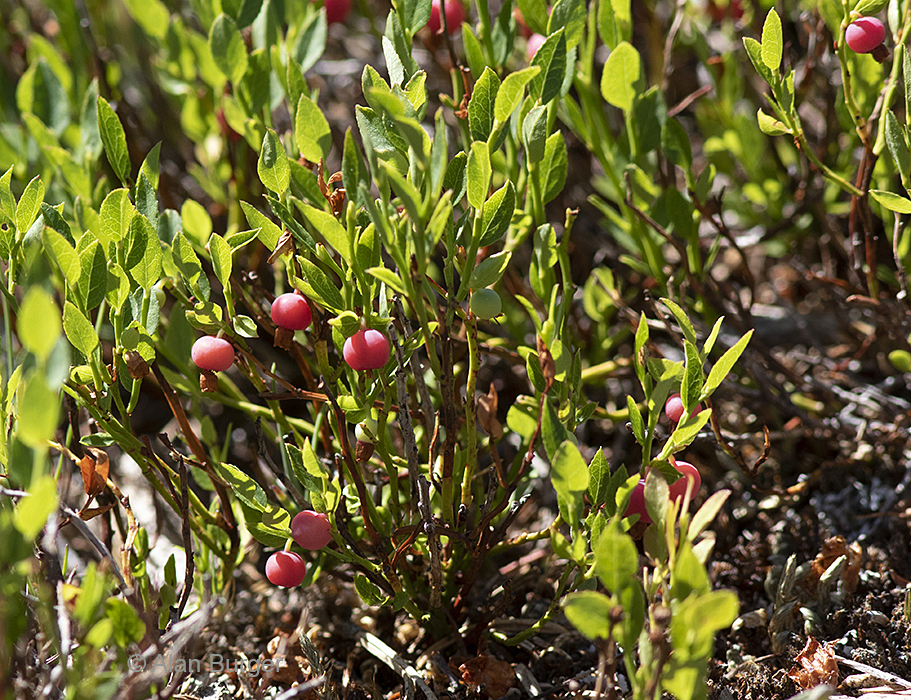
Tiny ripening berries of Grouseberry (Vaccinium scoparium). This is a very common plant carpeting the open woodland sub-alpine areas.
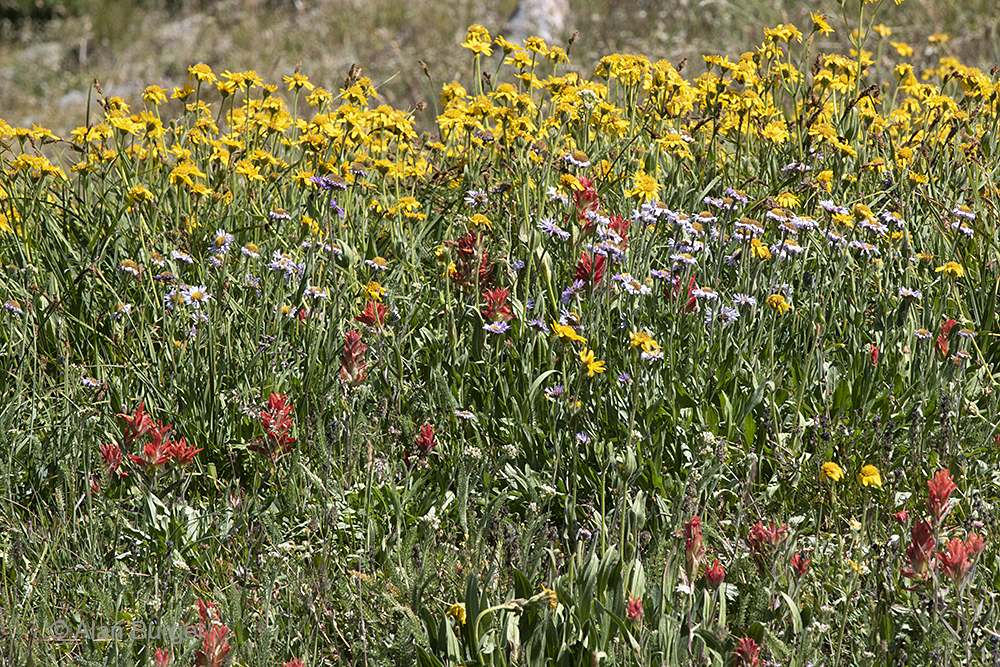
A mass of yellow alpine daisies, pale purple asters and red paintbrush flowers.
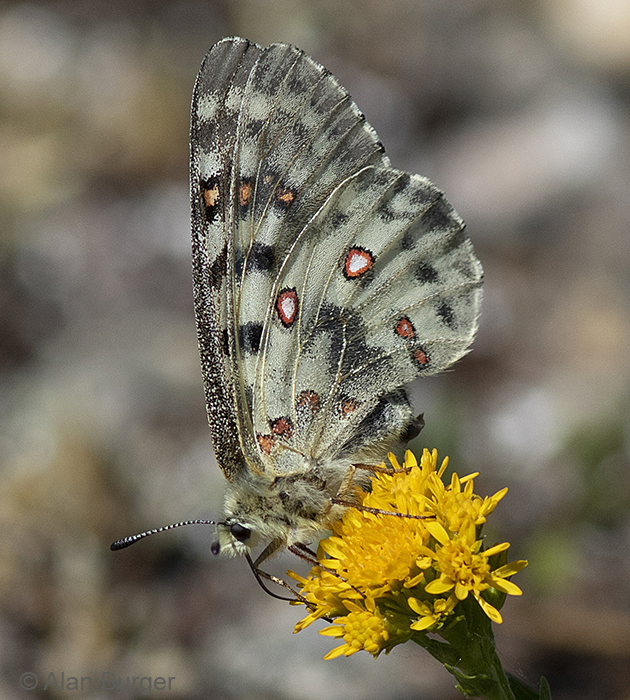
A Rocky Mountain Apollo butterfly (Parnassius smintheus) nectaring on a groundsel flower.
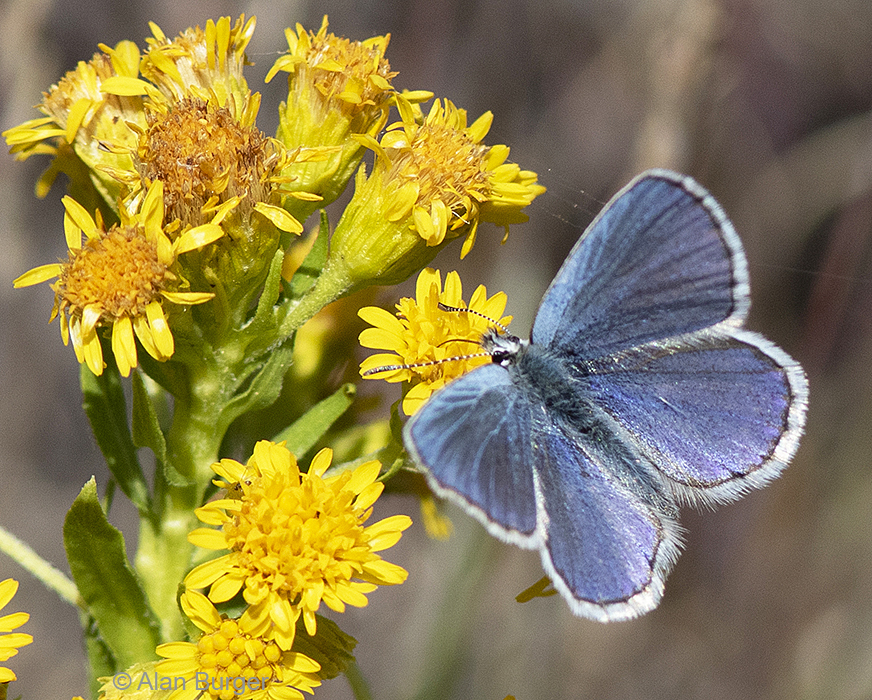
A tiny Anna’s Blue butterfly (Lycaeides anna) nectaring on yellow groundsel flowers.
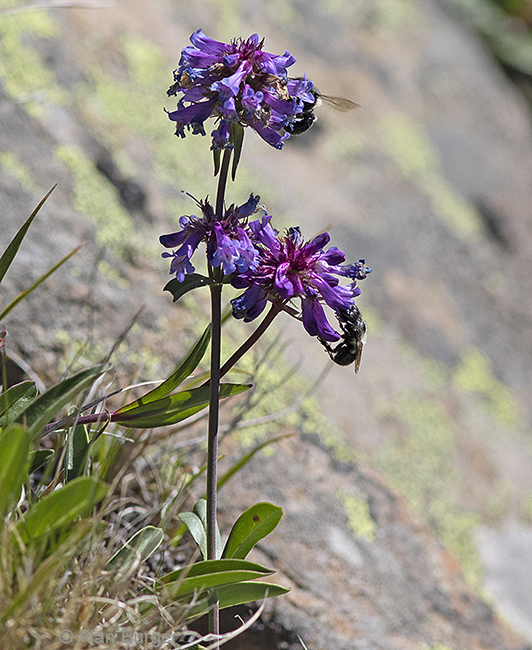
Butterflies are not the only pollinators in these alpine meadows. Here a couple of large bees are visiting a Small-flowered Penstemon (Penstemon procerus).
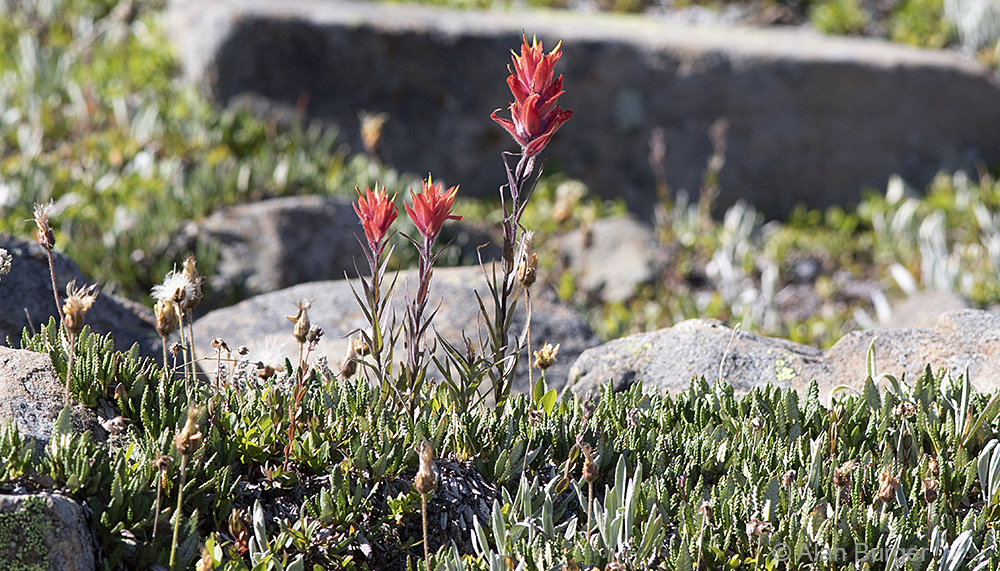
Paintbrushes (Castilleja sp.) are common in the alpine areas, but because different species often hybridize they are not always easy to identify. These ones are growing in a bed of Mountain Avens (Dryas octopetala) which has already gone to seed.
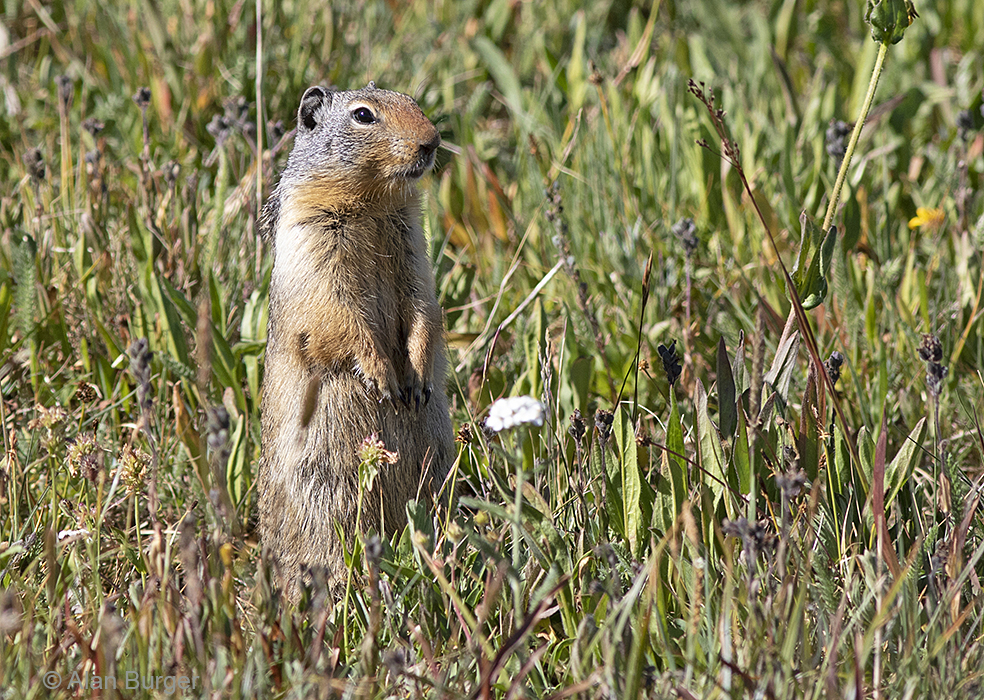
Columbia Ground-squirrels (Spermophilus columbianus) are common wherever there are grassy meadows in Cathedral Park.
My hike to Red Mountain Meadow, Diamond Trail and Scout Lake included many areas suitable for Spruce Grouse and I searched carefully for this bird, but in vain. Back in camp that evening as I was eating my dinner what should appear 10 metres away but a Spruce Grouse chick. Then another. And another. Eventually five half-grown chicks were foraging diligently around the camp, sometimes almost under my feet. But no sign of mum.
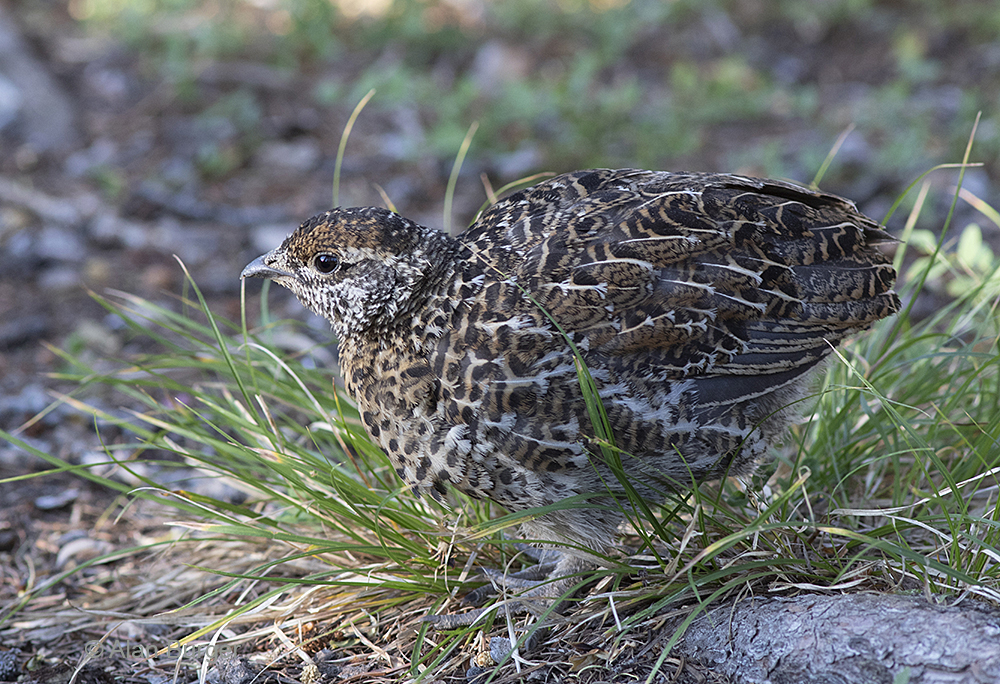
One of five Spruce Grouse chicks that came wandering into my camp area on 17 August.
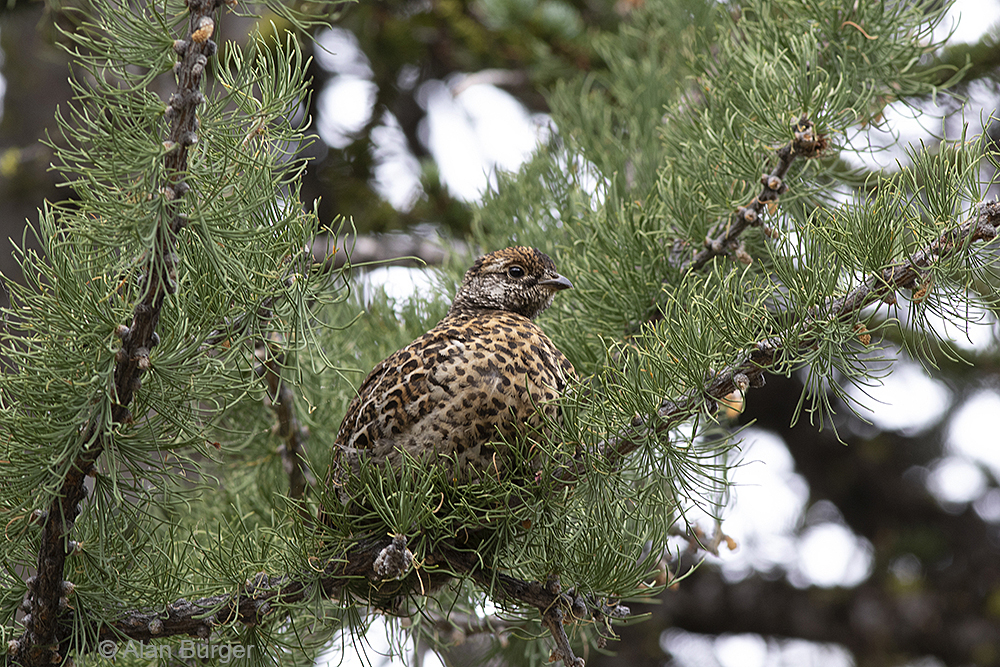
Three of these Spruce Grouse chicks flew up into the nearby larch tree and were eating the buds along the branches.
Eventually about 40 minutes later, mum finally appeared …..
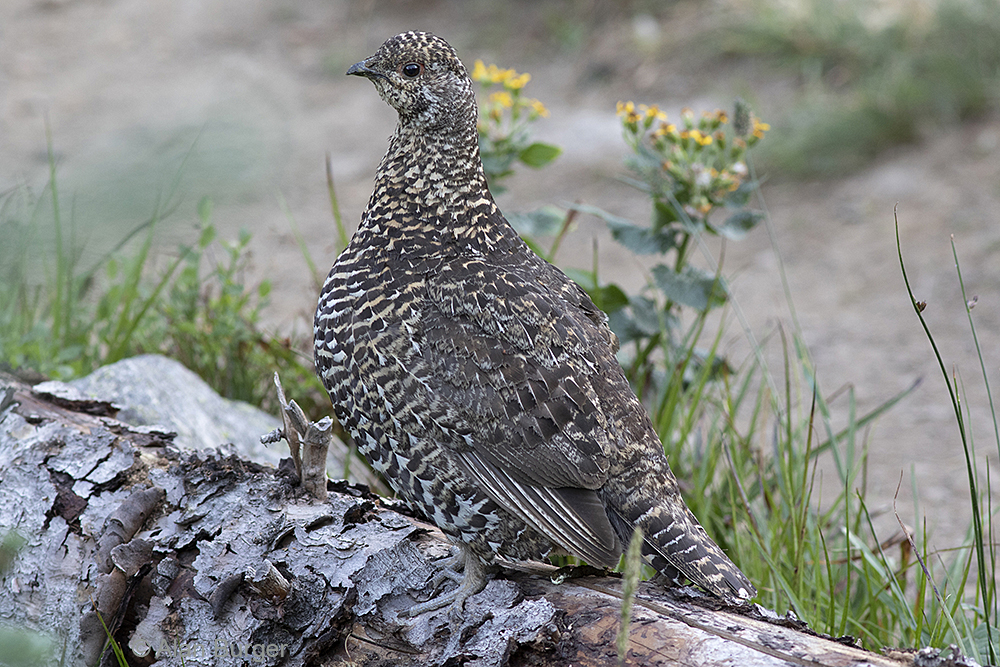
A female Spruce Grouse – the mother of the truant five chicks.
As it was getting dark I watched carefully to see how she was going to collect the scattered chicks and find a place to roost for the night. It all seemed very haphazard with chicks wandering up to 15 metres from each other. But eventually the female walked off out of sight toward the forest and the chicks drifted along, still pecking at food bits along the way.
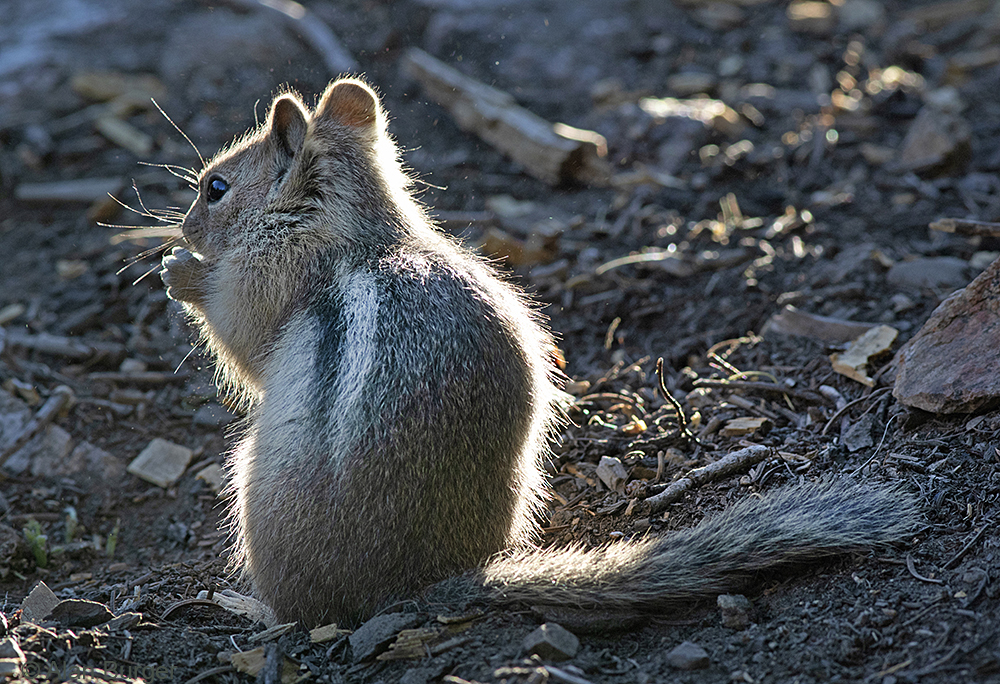
A regular visitor to my camp was this Cascade Golden-mantled Ground-squirrel (Spermophilus saturatus). The northern edge of this species’ range just barely makes it into British Columbia. Cathedral Lakes Park is one of the few places where they are common. Here the setting sun is highlighting its fur.
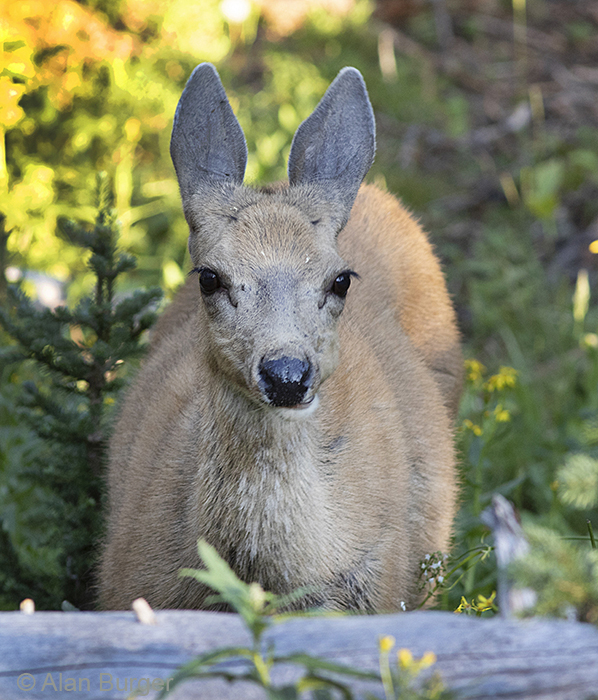
Another regular visitor to the camp area was this Mule Deer doe.
My final day was spent around Glacier Lake with it’s lush sub-alpine meadows, loaded with flowers, butterflies, other insects, birds and mammals.
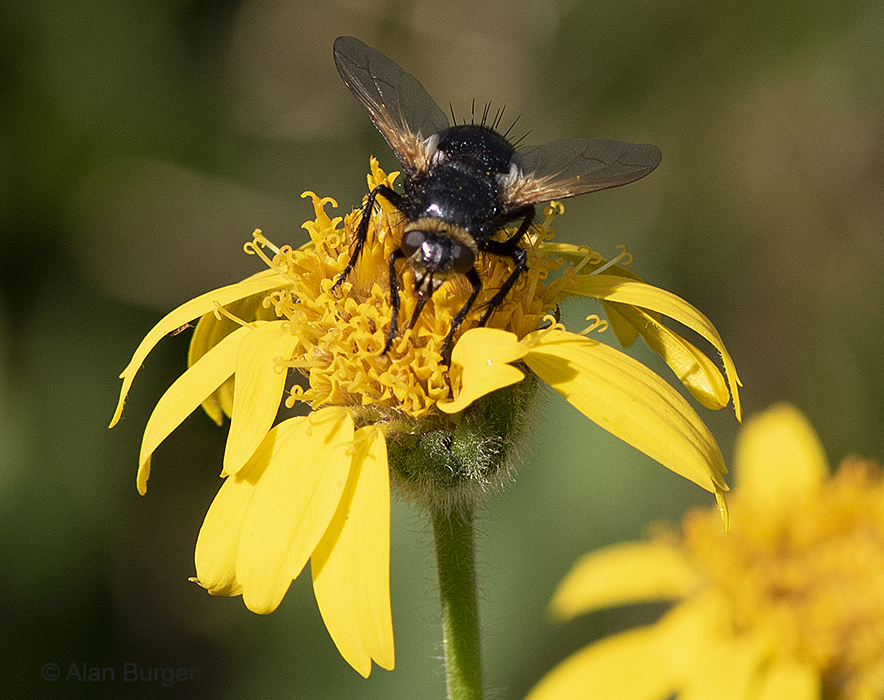
An impressively large fly visiting a daisy flower.
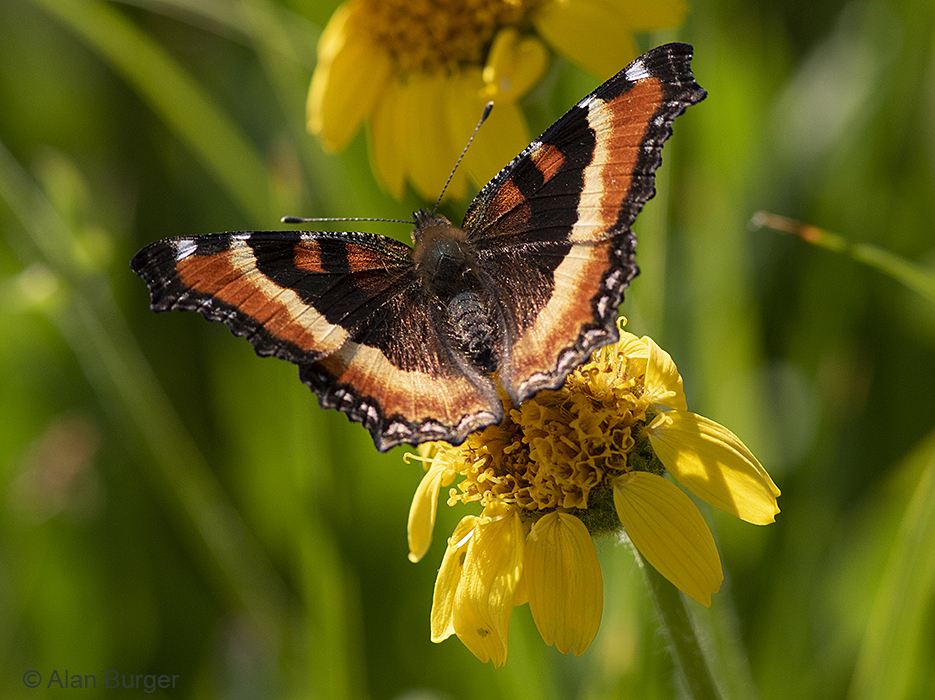
One of the most spectacular butterflies – Milbert’s Tortoiseshell (Aglais milberti).
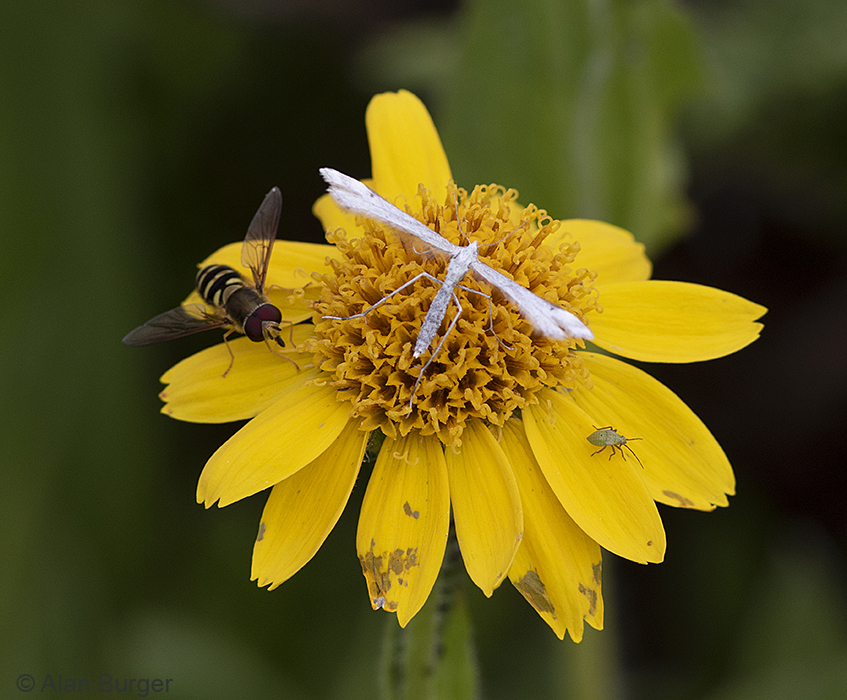
Insects from three different Orders visiting a daisy flower; left to right: Diptera (fly), Lepidoptera (moth) and Hemiptera (bug).
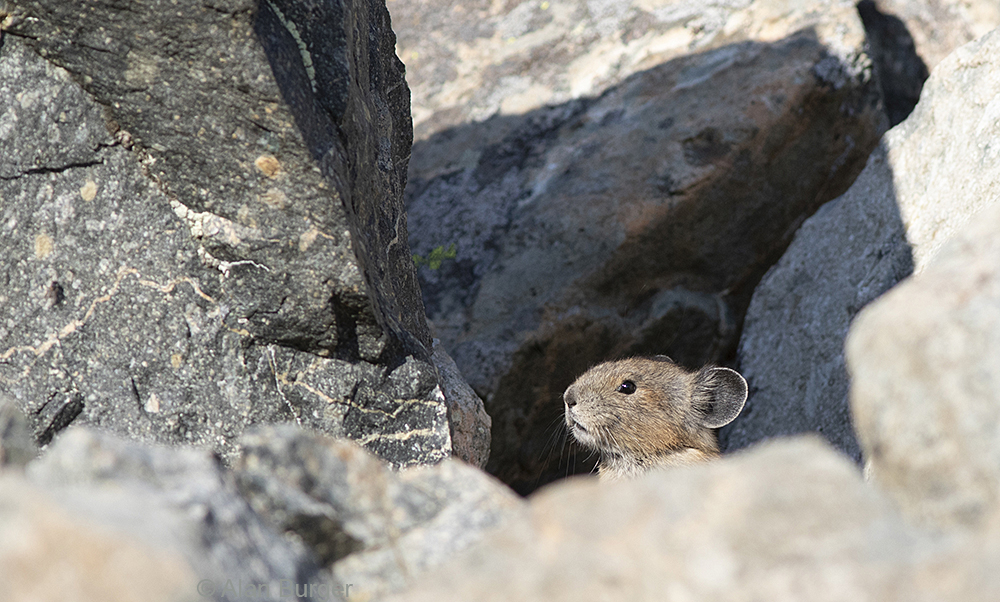
Pikas are one of my favourite critters. Living in rock piles they are always extremely active collecting vegetation to add to their drying hay piles to provide winter fodder.
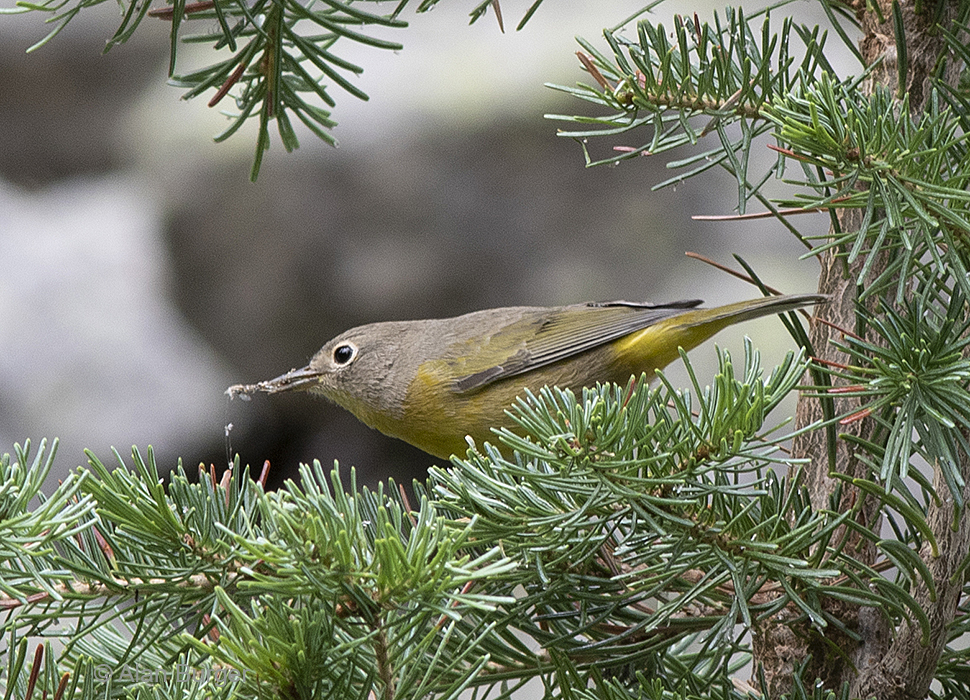
Among the dozens of Yellow-rumped Warblers in the sub-alpine trees, I was surprised to find this Nashville Warbler. I snapped this photo just as it grabbed a caterpillar in a fir tree.
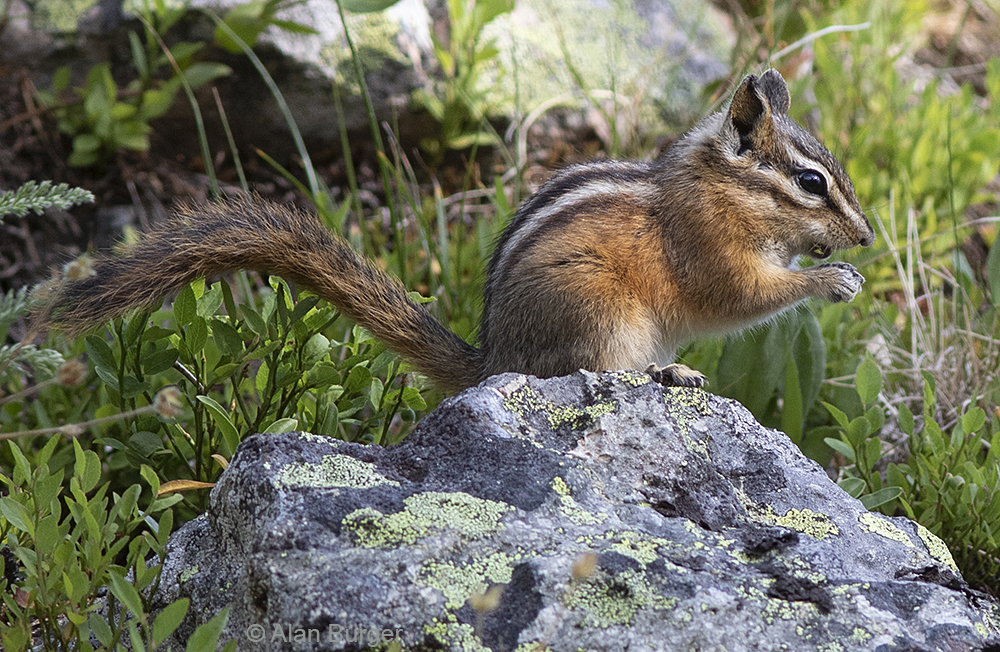
Yellow-pine Chipmunks are common throughout Cathedral Lakes Park – from the highest alpine to the thickest forest.
More photos of previous trips to Cathedral Lakes Park:
July 2021 click here: Cathedral Park July 2021
September 2020 click here: Cathedral Park September 2020
~~~~~~~~~~~~~~~~~~~~~~~~~~~~~~~~`
